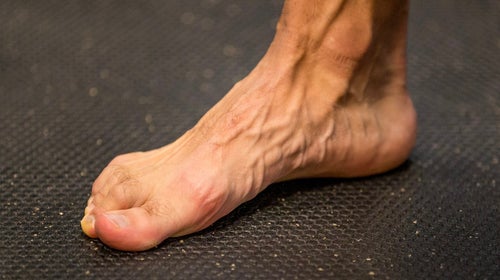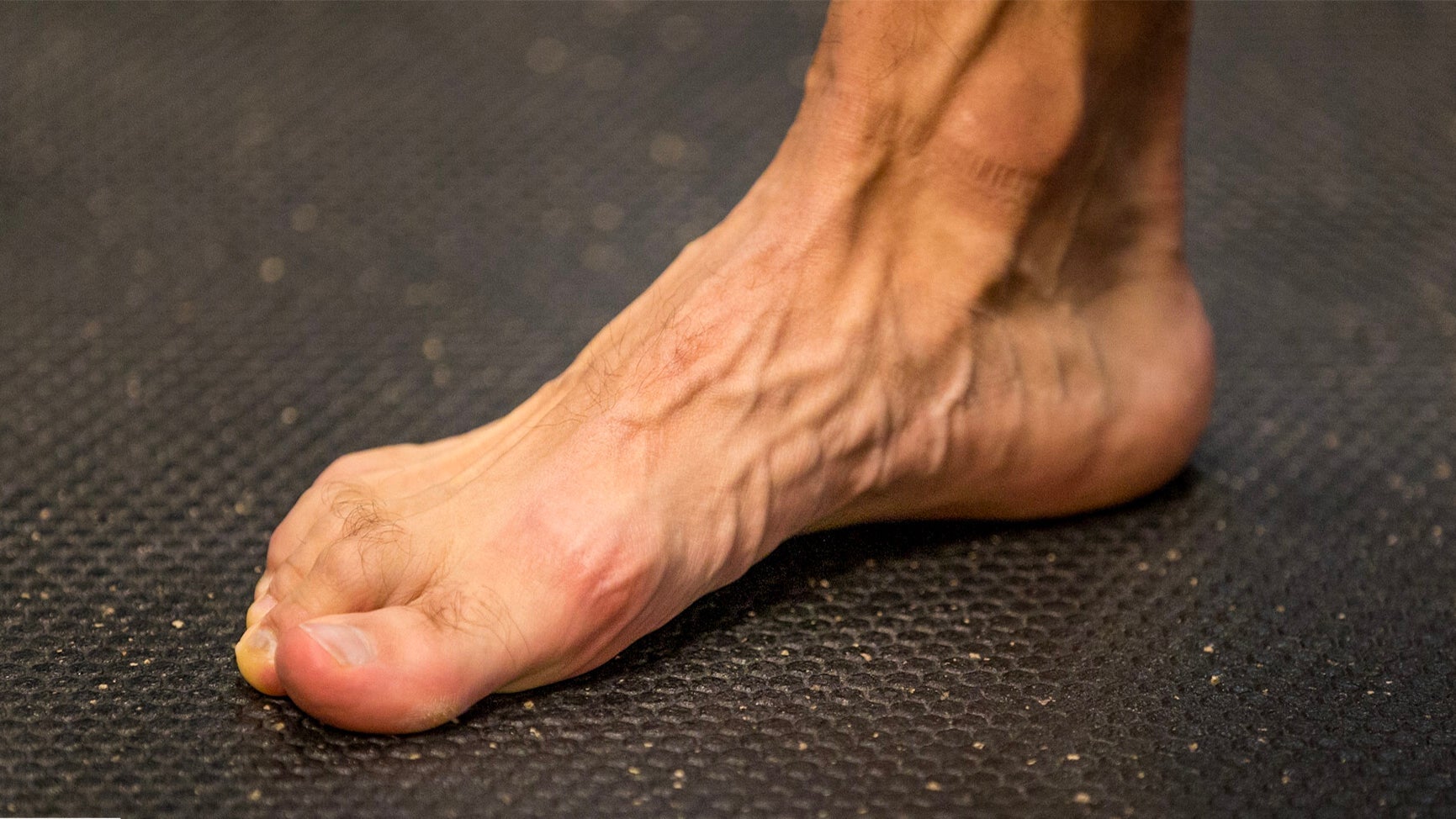I normally don’t give much thought to how strong my feet are. But they demanded my attention recently during the shortest marathon I ever ran: four miles.
It happened to also be the smallest marathon I’ve ever run, with just a handful of participants. My friend Bertrand Newson, who heads a running club in Silicon Valley, organized the socially distanced event for “orphans” of the 2020 San Francisco Marathon, the cancellation of which had been forced by the COVID-19 Pandemic. I was the ringer of the group, aiming to lower my personal-best time of 2:39:30, which, if I’d pulled it off, would have put me at the finish line more than an hour ahead of the next runner.
As it turned out, I never even made it to the finish line. Less than a mile into the race, my left foot, which had given me no trouble whatsoever in training, suddenly exploded in pain. Knowing from experience that such freakish sensations sometimes disappear as mysteriously as they appear, I tried to run through it, but by four miles I’d reached the limit of my very high pain tolerance and threw in the towel.

We All Have Weak Feet
A week or so later, I had a video consultation with Ryan Whited, a Flagstaff-based strength coach who specializes in helping runners work through pain and injury. Based on my description of the onset, location, and symptomology of the injury, Ryan gave me a tentative diagnosis of acute peroneal tendonitis. He then had me perform some tests of foot strength and ankle mobility to see what could be done to get me back to running and to prevent a recurrence.
I performed very poorly in these tests, which, Ryan assured me, was normal, because the shodden, seated modern lifestyle produces weak feet and immobile ankles as a matter of course. He assured me as well that my performance in the tests was a good thing in the sense that working on my strength and mobility limitations would very likely benefit my running.
I was given an initial selection of three exercises to do and told I would graduate to more advanced exercises once I’d made sufficient progress. One of the exercises entailed standing alternately on the ball of either foot for 5 to 10 seconds at a time and continuing for a total of three minutes. I had a hard time maintaining my balance in the beginning, but I kept at it every day and improved quickly. Three weeks after the injury occurred, I was pain free and back in full training.

Study: A Year of Foot Strengthening
It was against the backdrop of this recent experience that I stumbled across . The study was led by Ulisses Taddei, a researcher in the Physical Therapy, Speech and Occupational Therapy Department at the University of São Paolo’s School of Medicine. Taddei and his colleagues have spent the past few years developing and testing a “ground-up” approach to preventing running-related injuries that was originally proposed by Jennifer Baltich, a biomechanist who conducts research on behalf of major running shoe manufacturers. This approach is based on the idea that, as the only part of the body that comes into direct contact with the ground during running, the foot should be the focus of efforts to prevent impact forces from being transmitted through the body in ways that lead to breakdown.
Among the key functions that require strong foot musculature are maintaining the structural integrity of the arch during running and also limiting pronation of the foot during the contact phase of the stride. In their prior research, Taddei and colleagues were able to demonstrate that strengthening the foot muscles helps runners to better maintain the integrity of the arch when running and limits pronation. But do these functional changes translate to reduced injury risk? This new study suggests they do.
The subjects of the experiment were 118 recreational runners who were randomly assigned to either an intervention group or a control group. Members of the intervention group underwent an eight-week training course in foot and ankle strengthening followed by remote supervision for the balance of one year. Meanwhile, members of the control group continued to train as normal but underwent the same periodic assessments of foot strength and posture as the others and also submitted the same weekly reports on training distance, pace, and injuries.
Results: Reduced Running-Related Injuries
The results are worthy of every runner’s attention. Unsurprisingly, the runners who engaged in the foot-strengthening program showed significant improvements in both foot posture and foot strength. Less expected was the magnitude of the effect these improvements had on injury rates. Over the 12-month study period, the runners in the control group were 2.42 times more likely to get injured than were runners in the intervention group. Flipping the math around, foot strengthening reduced overall injury risk by 41 percent, which is huge.
For the sake of illustration, let’s suppose that, since the time you took up running, you’ve suffered five injuries significant enough to interrupt your training. Now imagine two of those injuries never happened. This is what a good foot-strength program can do for the typical runners, at least according to Taddei’s findings.
Unfortunately, Taddei’s paper does not include a complete description of the foot-strengthening program employed, but it does mention one specific exercise. It’s called the short-foot exercise, and here’s how to do it: Sit down with one bare foot positioned flat on the floor and the other out of the way. Now contract the muscles in the core of your foot, drawing your toes toward your body and causing the gap between your arch and the floor to grow. Concentrate on keeping your heel and toes in contact with the floor. When you’ve “shortened” your foot as much as you can (it won’t be by much), relax and return to the start position. Complete 10 repetitions and then work the opposite foot.

A picture is worth a thousand words, and a video is worth a thousand pictures, so to a video demonstration of a five-move foot-strengthening program for runners (which includes the aforementioned short-foot exercise) that was created by strength and conditioning specialist and Podium Runner contributor Jon-Erik Kawamoto. I hope I’ve done enough here to convince you it’s worth a try!


